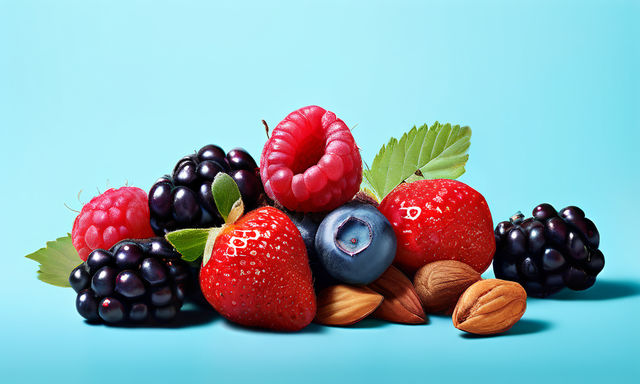Common Reasons You're Not Losing Weight Video
Many people who embark on weight loss journeys find themselves frustrated when the scale doesn't budge, despite seemingly healthy eating habits and regular exercise. One often overlooked factor in weight management is caloric density—understanding not just the quantity of food you're eating, but also its caloric content. This video and blog delve into how common misconceptions about calorie intake, especially with seemingly small amounts of food, can impact your weight loss efforts.
Video Content Overview:
1. Understanding Caloric Density
Caloric density refers to the number of calories contained in a specific weight of food. Foods with high caloric density have a large number of calories in a small amount of food, while foods with low caloric density contain fewer calories in a larger volume of food. Misjudging the caloric density of foods can lead to unintentional overeating, making it challenging to achieve a caloric deficit necessary for weight loss.
2. Examples of 300 Caloric Portions
Visual and descriptive examples of how small quantities of certain foods can sum up to 300 calories:
- - Mixed Nuts (50g): Nuts are highly nutritious, offering a good source of protein, healthy fats, and fiber.
- - Peanut Butter (55g): While peanut butter provides protein and healthy fats, it's very calorie-dense.
- - Olive Oil (35g): Known for its heart-healthy fats, olive oil is another high-calorie density food.
- - Pesto (90g): This delicious sauce made from basil, pine nuts, Parmesan, oil, and garlic, contains roughly 300 calories in just under a half cup (90 grams).
- - Raisins (95g): Raisins are a healthy snack providing iron and potassium, but their sugar concentration makes them high in calories.
- - Dark Chocolate (55g): While dark chocolate has antioxidants and can be beneficial in moderation, a little over a half-bar (55 grams) can contain 300 calories.
- - Coconut Yogurt (180g): As a dairy-free alternative, coconut yogurt offers some benefits like probiotics, but a standard serving (about 3/4 cup or 180 grams) also delivers about 300 calories.

3. Why Caloric Density Matters for Weight Loss
Understanding caloric density is crucial for successful weight management for several reasons:
- Overeating "Healthy" Foods
Even foods considered healthy can contribute significantly to calorie intake due to high caloric density.
- Portion Control
It is essential to manage portion sizes, especially with calorie-dense foods, to avoid consuming more calories than intended.
- Balancing Diet
Incorporating low-caloric density foods, such as fruits, vegetables, and whole grains, can help fill you up without adding too many calories.
4. Tips for Managing Caloric Intake
- - Measure Servings: Use measuring cups, spoons, or a food scale to keep your portion sizes in check.
- - Read Labels: Always check the nutritional info on food labels to understand how many calories are in each serving.
- - Balance Your Plate: Fill half of your plate with vegetables, a quarter with lean proteins, and a quarter with whole grains or another high-calorie dense food to keep meals balanced.
- - Choose Whole Foods: Opt for whole, unprocessed foods that are naturally lower in calories and higher in nutrients.
- - Stay Hydrated: Sometimes, thirst is confused with hunger. Drink plenty of water throughout the day to stay hydrated and prevent overeating.
Conclusion
Being mindful of calorie density and portion sizes can make a significant difference in your weight loss efforts. By understanding what contributes to your calorie intake and opting for lower-calorie, nutrient-rich foods, you can better manage your diet and move closer to achieving your weight loss goals.
Disclaimer: This blog post and video are for informational purposes only and do not constitute medical advice. Consult with a healthcare professional before making significant dietary changes, especially if you have health conditions or specific dietary needs.
Ready to level-up?
Create meal plans 10x faster, follow up with your clients through our mobile app, and never struggle with meal planning or recipe management again.